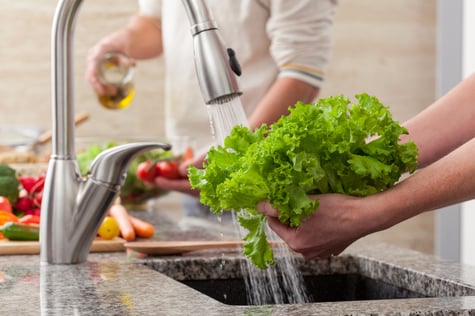 It is estimated that there are almost 48 million cases of foodborne illness/food poisoning in the United States each year (source: https://www.foodsafety.gov/food-poisoning). Of these cases, around 128,000 individuals are hospitalized and about 3,000 deaths occur. Rates of foodborne illness are higher during the summer months, as they are often warmer and more humid—the ideal environment for bacterial growth. In addition, many people participate in outdoor food-related activities, such as picnics, barbeques, and campsites, where the typical safety controls of a kitchen, such as refrigeration, cooling, and running water, are not always available
It is estimated that there are almost 48 million cases of foodborne illness/food poisoning in the United States each year (source: https://www.foodsafety.gov/food-poisoning). Of these cases, around 128,000 individuals are hospitalized and about 3,000 deaths occur. Rates of foodborne illness are higher during the summer months, as they are often warmer and more humid—the ideal environment for bacterial growth. In addition, many people participate in outdoor food-related activities, such as picnics, barbeques, and campsites, where the typical safety controls of a kitchen, such as refrigeration, cooling, and running water, are not always available
Keep reading to learn about the common causes of food poisoning, their symptoms, and steps you can take to protect your food this summer.
Common Food Poisoning Culprits and Their Symptoms
The onset time of the signs and symptoms of food poisoning depend on the type of virus, bacteria, or other pathogen you were exposed to and the symptoms can range from mild to severe. Some of the most common food borne illness causing pathogens and their symptoms include the following.
Salmonella
Symptom onset: 6 hours to 6 days after exposure.
Signs and symptoms: Diarrhea, fever, stomach cramps, vomiting.
Food sources: Raw or undercooked poultry and meat; eggs, unpasteurized (raw) milk and juices; raw fruits and vegetables.
Staphylococcous aureus (Staph)
Symptom onset: 30 minutes to 8 hours after exposure.
Signs and symptoms: nausea, vomiting, stomach cramping.
Food sources: Foods that are not cooked after handling (sliced meats, pudding, sandwiches, etc.).
Clostridium Perfringens
Symptom onset: 6 to 24 hours after exposure.
Signs and symptoms: Diarrhea and stomach cramps (vomiting and fever are uncommon).
Food sources: Beef, poultry, gravies, dried and/or precooked foods.
Norovirus
Symptom onset: 12 to 48 hours after exposure.
Signs and symptoms: Diarrhea, nausea, stomach pain, vomiting.
Food sources: Leafy greens, fresh fruit, shellfish, unsafe water.
Clostridium Botulism
Symptom onset: 18 to 36 hours after exposure.
Signs and symptoms: Double/blurry vision, drooping eyelids, slurred speech, muscle weakness.
Food sources: improperly canned or fermented foods.
Escherichia Coli (E Coli)
Symptom onset: 3 to 4 days after exposure.
Signs and symptoms: Severe stomach cramping, vomiting, diarrhea (sometimes bloody).
Food sources: Raw or undercooked ground beef, unpasteurized (raw) milk and juices, raw vegetables (sprouts, lettuce), unsafe water.
Listeria
Symptom onset: 1 to 4 weeks after exposure.
Signs and symptoms: headache, stiff neck, fever, muscle aches.
Food sources: Soft cheeses, raw sprouts, fresh melon, hot dogs, and other deli meats.
Individuals at Increased Risk for Foodborne Illness
People who are most at risk include the following:
- Pregnant women and infants.
- Children younger than 5 years old.
- Elderly (> 65 years of age).
- Immunocompromised (cancer, HIV/AIDS, autoimmune diseases, etc.)
6 Steps for Practicing Food Safety This Summer
Follow these tips to avoid food poisoning at your summer gatherings.
Wash Your Hands
Always wash your hands with warm, soapy water for at least 20 seconds before, during, and after food preparation and handling. Be sure to dry your hands completely after washing using a clean towel. If you don’t have running water or access to safe water, be sure to bring wet disposable wipes, paper towels, and surface disinfectant for cleaning hands, cooking surfaces, and utensils.
Keep Cutting Boards and Utensils Clean
Use separate cutting boards, serving dishes and other utensils (tongs, spatulas, etc) for cooked and raw foods. Be sure to thoroughly wash all items that come into contact with raw food with warm soapy water prior to reuse.
Get a New Plate After Handling Raw Meats
Never serve cooked foods on the same plate or platter that once held raw meat, poultry, or fish to avoid cross-contamination.
Thaw in the Refrigerator
Thaw food in the refrigerator rather than at room temperature or on the counter.
Cook to Safe Internal Temperatures
Use a food thermometer to ensure the food reaches safe internal temperatures:
- Beef, pork, lamb, veal (steaks, roasts, chops, etc.): 145F
- Ground meats (hamburgers, etc.): 160F
- Whole and ground poultry (chicken, turkey): 165F
Don't Leave Food Out
Refrigerate leftovers within 2 hours after cooking. If outdoor temperatures exceed 90F, refrigerate perishable foods within 1 hour. Keep your refrigerator below 40F.
This blog was written by Lindsey Recker, MS, RD, NIFS Registered Dietitian. To learn more about the NIFS bloggers, click here.


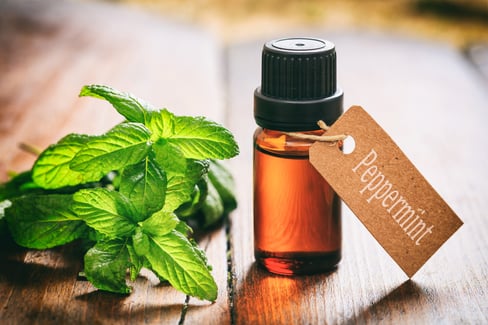 Peppermint oil is a commonly used nutrition
Peppermint oil is a commonly used nutrition 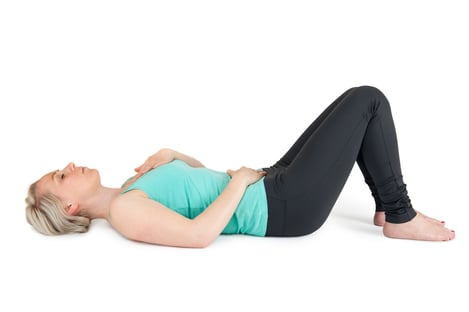 In The Wizard of Oz, Dorothy woke up after a terrible storm in a world she didn’t recognize. The normal that she had known no longer existed. We are “not in Kansas” (or Indiana, for that matter) anymore after COVID-19 erupted around the world. Normal is gone for the time being. Some people have lost jobs and incomes, or are forced to work from home. Some have had or are fighting the disease, and some unfortunately have lost their lives.
In The Wizard of Oz, Dorothy woke up after a terrible storm in a world she didn’t recognize. The normal that she had known no longer existed. We are “not in Kansas” (or Indiana, for that matter) anymore after COVID-19 erupted around the world. Normal is gone for the time being. Some people have lost jobs and incomes, or are forced to work from home. Some have had or are fighting the disease, and some unfortunately have lost their lives. 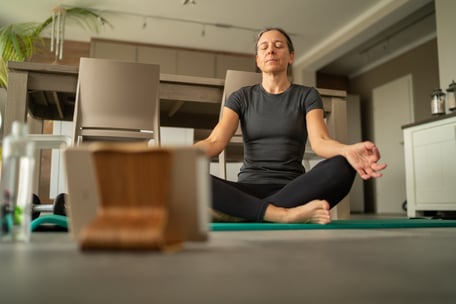 Take these next few weeks or so and use them to your advantage. We know this is an extremely challenging time, and we want to make sure you feel like you are taken care of. Circumstances are tricky right now, so even if you adopt one new technique, consider that a win! Don’t expect yourself to “eat the rainbow” every day, feel like you fall asleep easily at night from a relaxing day working at home in your pajamas, or get in a 10-mile run each morning. While you shelter at home and stay healthy, keep these tips in mind.
Take these next few weeks or so and use them to your advantage. We know this is an extremely challenging time, and we want to make sure you feel like you are taken care of. Circumstances are tricky right now, so even if you adopt one new technique, consider that a win! Don’t expect yourself to “eat the rainbow” every day, feel like you fall asleep easily at night from a relaxing day working at home in your pajamas, or get in a 10-mile run each morning. While you shelter at home and stay healthy, keep these tips in mind. It goes without saying; we’re living through some pretty odd times. With the onset of COVID-19, many of our lives have been flipped on their heads. For some, there has been less structure, and maybe a little more downtime, and that has the potential to make even the sanest of them all go a little stir-crazy.
It goes without saying; we’re living through some pretty odd times. With the onset of COVID-19, many of our lives have been flipped on their heads. For some, there has been less structure, and maybe a little more downtime, and that has the potential to make even the sanest of them all go a little stir-crazy.  During these unprecedented times of self- and mandated quarantines and stay-at-home orders, it can be easy to slip into a negative mindset accompanied by fear of the unknown and worry about how you are going to get through this. Self-quarantine does not have to be void of self-improvement. Social media is drenched with ideas and strategies to keep up your physical fitness at home with a million bodyweight workouts and DIY fitness equipment ideas. I’m partial to the elite content that the NIFS pros are providing daily, obviously, but there is no shortage of methods out there to keep moving at home. But what about emotional and mental fitness, and how to continue the work on YOU that makes us strong individuals inside and out?
During these unprecedented times of self- and mandated quarantines and stay-at-home orders, it can be easy to slip into a negative mindset accompanied by fear of the unknown and worry about how you are going to get through this. Self-quarantine does not have to be void of self-improvement. Social media is drenched with ideas and strategies to keep up your physical fitness at home with a million bodyweight workouts and DIY fitness equipment ideas. I’m partial to the elite content that the NIFS pros are providing daily, obviously, but there is no shortage of methods out there to keep moving at home. But what about emotional and mental fitness, and how to continue the work on YOU that makes us strong individuals inside and out?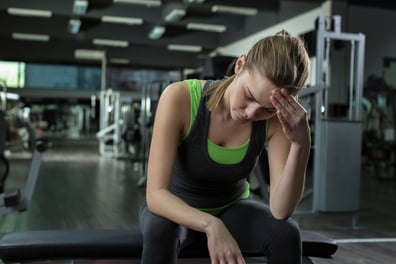 Have you ever woken up feeling like a truck ran you over? This might be due to an underlying illness; whether it be a cold, flu, bronchitis, or some other bug, it seems to happen to everyone at least once per year. When it comes to fitness, we sometimes have to make a choice: “Should I work out or should I rest?” The answer to this is not as cut and dried as it might seem. We’ll look at when it’s a good idea to stay home and chill and when you can just “sweat it out.”
Have you ever woken up feeling like a truck ran you over? This might be due to an underlying illness; whether it be a cold, flu, bronchitis, or some other bug, it seems to happen to everyone at least once per year. When it comes to fitness, we sometimes have to make a choice: “Should I work out or should I rest?” The answer to this is not as cut and dried as it might seem. We’ll look at when it’s a good idea to stay home and chill and when you can just “sweat it out.”